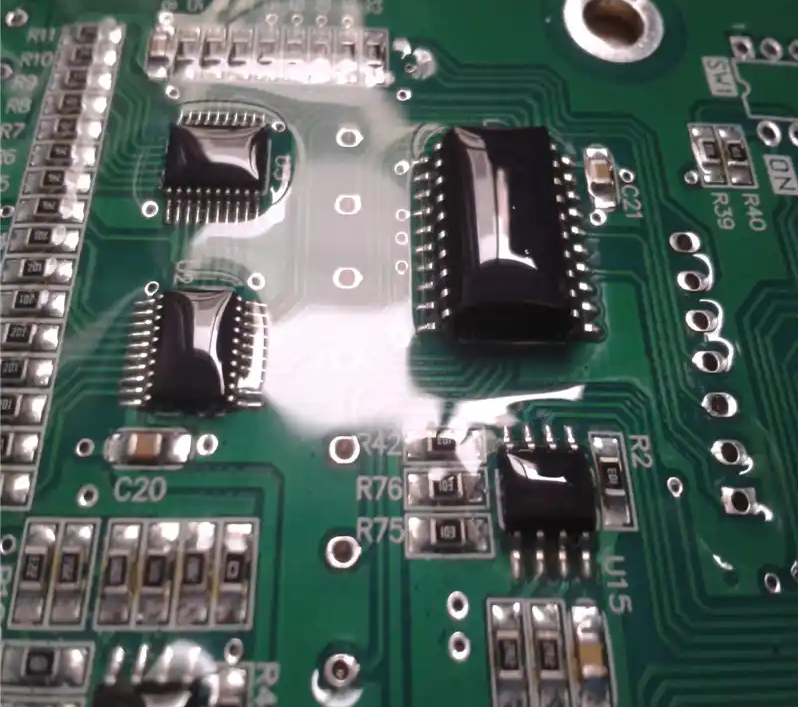

Now, let’s continue to learn another 4 precautions in this article.
1. Film Thickness Control:
The thickness of the film depends on the application method and the amount of thinner added. The more thinner added, the lower the viscosity of the glue, and the thinner the coating; conversely, the higher the viscosity, the thicker the coating.
2. Coating Environment Requirements:
All coating operations should be conducted under conditions of no less than 16°C and a relative humidity of less than 75%. PCBs, as composite materials, can absorb moisture. If the moisture is not removed, the conformal coating cannot fully protect. Pre-drying and vacuum drying can remove most of the moisture.
3. Selective Spraying:
This is an accurate and material-saving coating method, mainly used for medium and large equipment. The coating equipment is usually very expensive and has high maintenance requirements. The thickness of the coating is affected by four factors: the nature of the COATING, temperature, pressure, and the design structure of the equipment.
4. Whole Board Automatic Spraying:
Using aerosol products is convenient for repair and small-scale production, while spray guns are suitable for large-scale production. For medium-sized equipment, this is an economical method, and the protective film is easier to form, but it is difficult to apply to the bottom of components, requiring reprocessing. The thickness of the coating is affected by linear relative movement speed, material temperature, and spraying equipment pressure. Spraying is commonly used for medium batch production, with high production rates and low production costs. Spraying is difficult to apply under components and requires more maintenance. The type of feed system, line speed, material temperature, and atomizing pressure used will affect the applied thickness.
All above are the introduction of conformal coating in PCB manufacture. If you want to get a PCB products with conformal coating, come and take an order with our sales.